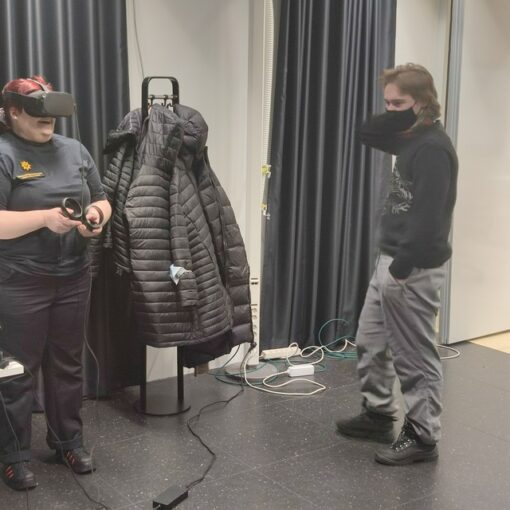Imagine a typical day at an emergency room. A patient arrives unresponsive, with symptoms of shock ‒ cold, clammy skin, rapid heartbeat, shallow breathing. The medical team springs into action, assessing the patient’s condition and gathering the necessary equipment. Despite the efforts of the emergency team, the outcome was not what they had expected, mainly due to a few minutes wasted for unavoidable reasons.
For decades, this has been the usual scene often replayed in most emergency rooms with tragic results. The delay, although sometimes inevitable, can be fatal. Traditionally, the focus has been on the severity of the trauma itself, with less attention given to the timing of the response. The research has helped to provide new insights into trauma care and highlighted vital strategies that could be used to guarantee the best outcomes for patients.
Understanding the delays
Based on the bachelor’s thesis by Sintonen (2024), understanding the epidemiology of delays in care experienced by trauma patients is crucial in improving emergency care quality in different healthcare facilities. A study conducted by Zimmerman et al. (2020) highlighted some of the critical aspects of delayed trauma care that patients are likely to experience. Patients may experience delays in arriving at the hospital due to a lack of emergency care services in their area. In addition, the patient’s location may be inaccessible to emergency personnel, contributing to the delays in hospital arrival.
Depending on the severity of the injuries, the delays in hospital arrival can adversely impact patient outcomes. The ideal time from arrival at the hospital to assessment by a physician for an emergency, in urgent and significant trauma cases, is less than 10 minutes (Gruen et al. 2006).
As highlighted by the study by Morgan & Calleja (2020), this time is not always met in most cases before patients receive the care they require; hence, it is a significant cause for concern. In most instances, due to limited hospital resources, it takes about 1 to 2 hours for trauma patients to arrive at healthcare facilities and finally be seen by the physician.

The evidence that even minor delays in shock management can significantly affect patient outcomes underscores the urgent need for rapid response in emergency care. This insight shifts the focus from merely addressing the severity of trauma to prioritizing the speed of intervention. Healthcare providers must now be acutely aware that the clock starts ticking the moment a patient presents with shock symptoms.
What this means for practice?
- Prioritize speed: Emergency departments should clearly define their triage protocols, pointing to the need to provide early evaluation and management of shock. This includes optimizing triage activities while ensuring that life-saving interventions are commenced.
- Pre-emptive measures: Emergency department facilities must consider adopting new technology to improve the identification and treatment of trauma patients and minimize the risk of treatment failure.
- Training and protocols: Given the overall urgency of the issue and its impact on care, it would be essential to consider continuing education for healthcare personnel. The training will aim to improve their knowledge and skills to respond appropriately to the conditions that exist in the emergency center. Training programs should focus on the critical nature of timing in trauma care and include simulations and exercises emphasizing rapid response. Regular continuing education can ensure that all staff members are updated with the latest protocols and best practices.
By implementing these changes, healthcare providers can improve their responsiveness to shock and trauma cases, ultimately improving patient outcomes and saving lives.
Authors
Linet Sintonen is a graduate paramedic nurse student from LAB University of Applied Sciences.
Marjut Louhelainen works as a Senior Lecturer at LAB University of Applied Sciences.
References
Gruen, R. L., Jurkovich, G. J., McIntyre, L. K., Foy, H. M. & Maier, R. V. 2006. Patterns of errors contributing to trauma mortality: lessons learned from 2,594 deaths. Annals of Surgery, 244(3), 371–380. Cited 8 May 2024. Available at https://doi.org/10.1097/01.sla.0000234655.83517.56
Morgan, J. M. & Calleja, P. 2020. Emergency trauma care in rural and remote settings: Challenges and patient outcomes. International emergency nursing, 51, 100880.
Sintonen, L. 2024. Effects of delayed shock and trauma management on general care outcomes. Cited 4 Oct 2024. Available at https://www.theseus.fi/handle/10024/266372/browse?type=author&value=Sintonen%2C+Linet
Webster, T. 2015. Emergency Room. Wikimedia Commons. Cited 30 Sep 2024. Available at https://commons.wikimedia.org/w/index.php?curid=41790754
Zimmerman, A., Fox, S., Griffin, R., Nelp, T., Thomaz, E. B. A. F., Mvungi, M., & Staton, C. A. (2020). An analysis of emergency care delays experienced by traumatic brain injury patients presenting to a regional referral hospital in a low-income country. PLoS One, 15(10), e0240528.




